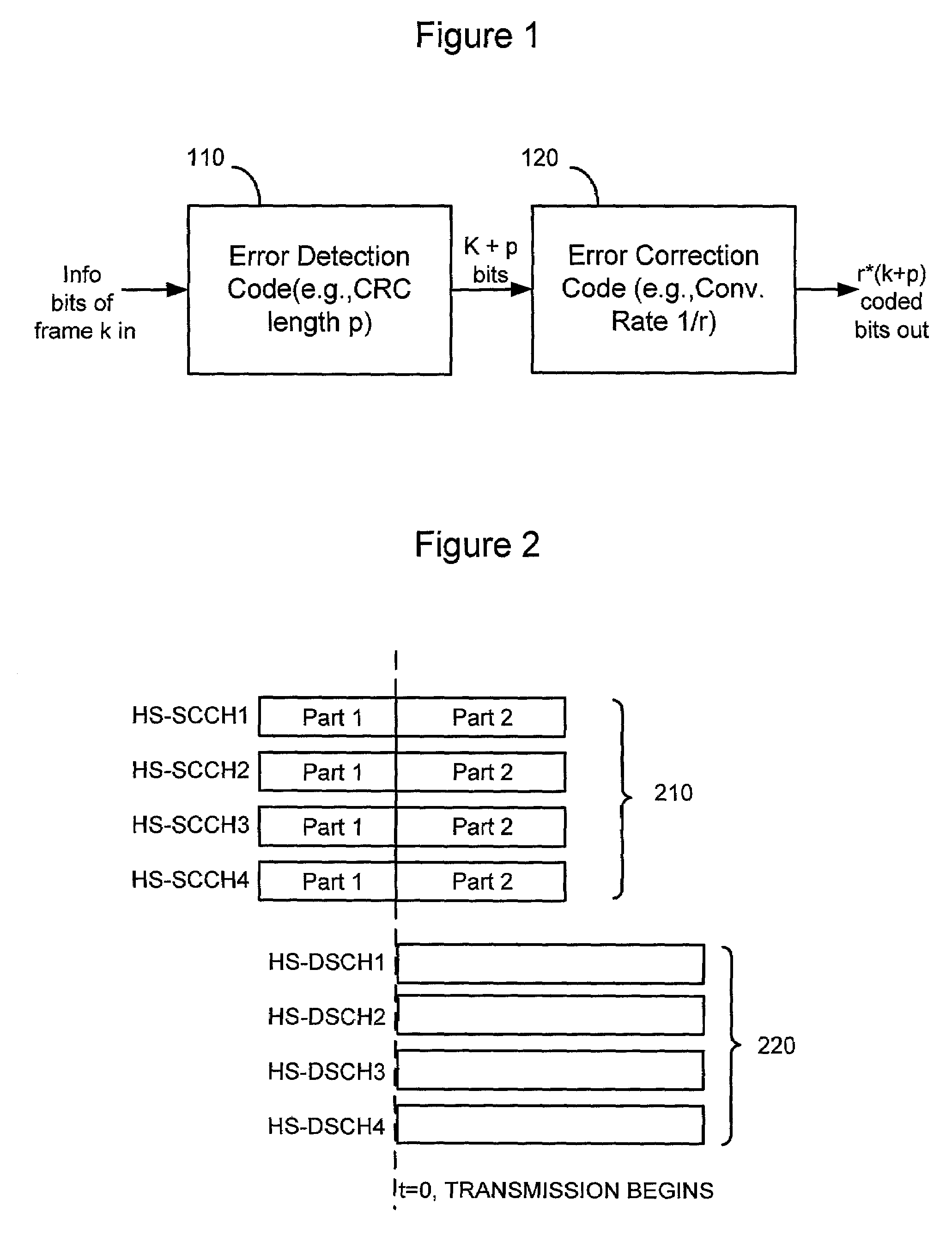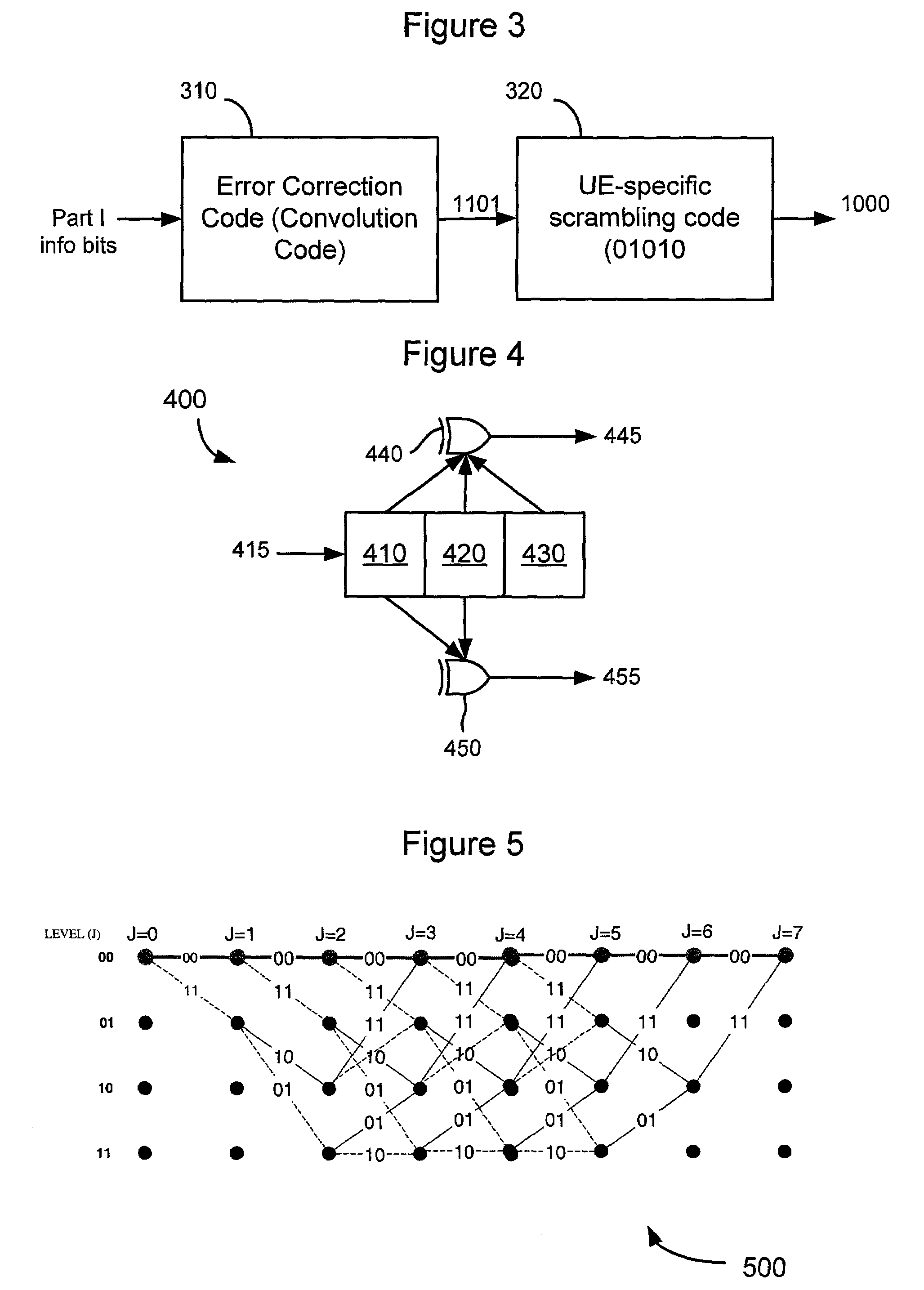Error detection methods in wireless communication systems
a wireless communication system and wireless communication technology, applied in the field of wireless communication systems, can solve the problems of loss or delay of information, low probability of detection, and excessive overhead of using even a length-8 crc, and achieve the effect of low probability of false alarm and high probability of error detection
- Summary
- Abstract
- Description
- Claims
- Application Information
AI Technical Summary
Benefits of technology
Problems solved by technology
Method used
Image
Examples
Embodiment Construction
[0047]Although the principles of the invention are particularly well-suited for wireless communications systems based on the well-known High Speed Downlink Packet Access (HSDPA) specification in the Universal Mobile Telecommunication System (UMTS) standard, and will be described in this exemplary context, it should be noted that the embodiments shown and described herein are meant to be illustrative only and not limiting in any way. As such, various modifications will be apparent to those skilled in the art for application to other transmission systems and are contemplated by the teachings herein. Additionally where used below, user equipment (UE) is synonymous to a mobile station in a wireless communication network.
[0048]Accordingly, there is now described a method for detecting errors in control channels of a wireless communication system that overcomes the problems of inadequate error detection and false alarm performance, which are present in the conventional scrambling or EPMD ...
PUM
 Login to View More
Login to View More Abstract
Description
Claims
Application Information
 Login to View More
Login to View More - R&D
- Intellectual Property
- Life Sciences
- Materials
- Tech Scout
- Unparalleled Data Quality
- Higher Quality Content
- 60% Fewer Hallucinations
Browse by: Latest US Patents, China's latest patents, Technical Efficacy Thesaurus, Application Domain, Technology Topic, Popular Technical Reports.
© 2025 PatSnap. All rights reserved.Legal|Privacy policy|Modern Slavery Act Transparency Statement|Sitemap|About US| Contact US: help@patsnap.com



